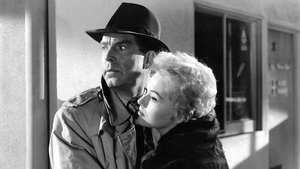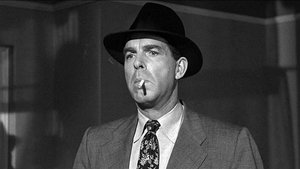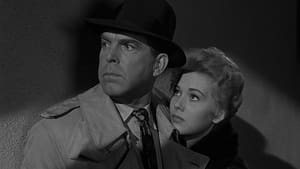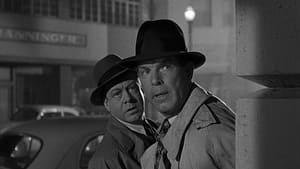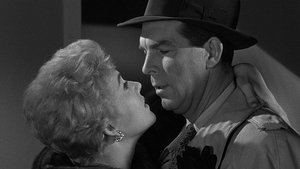Video Sources 0 Views
- Watch trailer
- Pushover 1954 Colorized

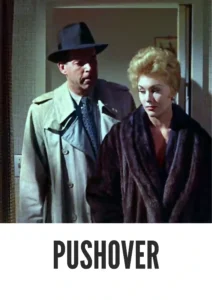
Synopsis
Table of Contents
Toggle
Dive into the dark world of Pushover, a gripping crooked cop drama from 1954, now brilliantly colorized to intensify its enthralling narrative. Starring Fred MacMurray, this film explores themes of corruption, temptation, and the perilous consequences of crossing the line. A perfect watch for fans of noir-era suspense and intricate crime stories, this HD download provides a visually stunning experience of a classic thriller.
Pushover tells the story of Paul Sheridan (Fred MacMurray), a police detective who finds himself embroiled in a dangerous scheme. Entrusted with the task of surveilling the girlfriend of a bank robber, Lona McLane (Kim Novak), Paul becomes infatuated with her. Lona persuades Paul to steal the money and run away with her.
As Paul falls deeper under Lona’s spell, he agrees to help her fake her own murder, intending to frame the robber and run off with the stolen money. The plan spirals out of control, leading to a complex web of deceit, betrayal, and unexpected twists. With the police closing in and suspicions rising among his colleagues, Paul must navigate a deadly game of cat and mouse to protect himself and Lona. The film builds to a suspenseful climax, revealing the true motivations of its characters and the devastating consequences of their choices. Pushover is a morally complex thriller that keeps you on the edge of your seat until the very end.
The film showcases stellar performances from its talented cast:
-
Fred MacMurray as Paul Sheridan
-
Kim Novak as Lona McLane
-
Philip Carey as Rick McAllister
-
Dorothy Malone as Ann Stewart
-
Eileen Heckart as Mrs. Sherman
Pushover is a prime example of a crooked cop drama, blending elements of suspense and psychological tension, characteristic of the film noir era. Its dark themes, intricate plot, and morally ambiguous characters create a captivating and intense cinematic experience.
Released in 1954, Pushover emerged during the height of the film noir era, reflecting the anxieties and moral complexities of post-war America. The film is notable for its exploration of corruption within law enforcement and its portrayal of a protagonist driven by lust and greed. Kim Novak’s role as the seductive Lona McLane marked one of her early performances, contributing to her rise as a prominent Hollywood star. Pushover remains a significant work within the film noir genre, showcasing the era’s fascination with dark themes and morally compromised characters.
This colorized version of Pushover has been meticulously restored using advanced digital techniques, enhancing the visual impact of the film while maintaining its original suspenseful atmosphere. The colorization process involved detailed analysis of the original black and white footage, with careful attention to lighting and shadow to create a visually rich and engaging experience. While the specific software and methods used are proprietary, the result is a stunning transformation that brings new life to the characters and settings. This colorization not only preserves the film’s legacy but also introduces it to a new generation of viewers, ensuring its continued appreciation.
-
: Fred M. Wilcox
-
: Roy Huggins
-
: Thomas Walsh, William P. McGivern
-
: Joseph F. Biroc
-
: Otto Ludwig
-
: Columbia Pictures Corporation
-
: Columbia Pictures
-
: 88 minutes
-
: MP4
-
: HD (1080p)
-
: Compatible with most devices, including smartphones, tablets, computers, and smart TVs.
Pushover (1954) has been praised for its suspenseful plot, strong performances, and its exploration of morally ambiguous characters. Critics have noted Fred MacMurray’s compelling portrayal of a flawed protagonist and Kim Novak’s captivating screen presence. As a standout film, Pushover offers a thrilling and thought-provoking examination of the dark side of human nature.
-
: What is Pushover about?
-
A: Pushover is a crooked cop drama about a police detective who becomes entangled in a web of deceit and murder after falling for a seductive woman.
-
-
: Is Pushover (1954) a well-known film noir?
-
A: Pushover is a notable film noir that showcases the genre’s themes of corruption, desire, and moral compromise.
-
-
: Is this version of Pushover colorized?
-
A: Yes, this version has been professionally colorized to enhance the viewing experience.
-
-
: What makes Pushover interesting for film noir fans?
-
A: Pushover offers a gripping storyline, strong performances, and a morally complex exploration of its characters, making it a standout in the genre.
-
-
: What is the download format?
-
A: The download format is MP4, which is compatible with most devices.
-
-
: What resolution is the download?
-
A: The resolution is HD (1080p), providing a high-quality viewing experience.
-
Watch Pushover Today!
